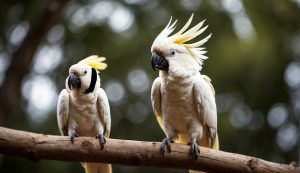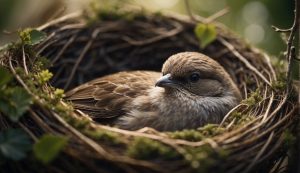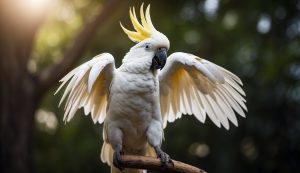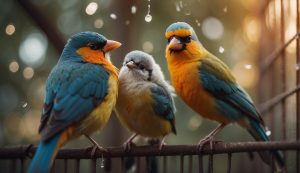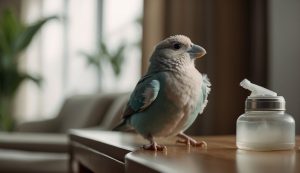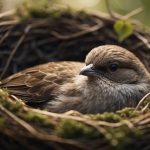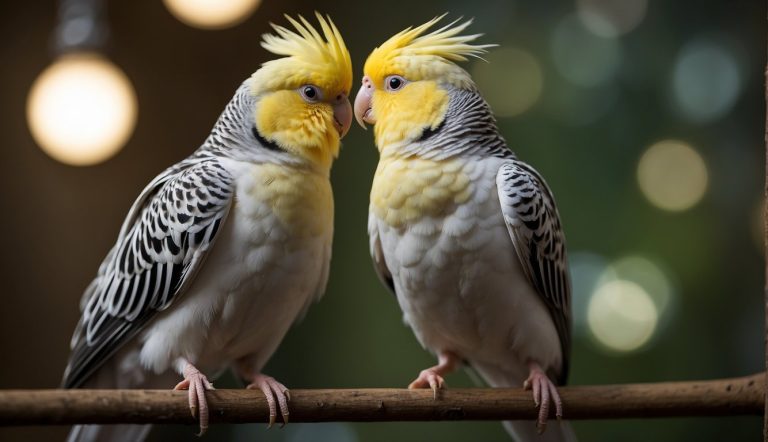What Size Cage Should My Parrot Have? Essential Space Guidelines for Healthy Birds

When I first became a parrot owner, one of the essential decisions I had to make was choosing the right size cage for my new feathered friend. The cage is more than just a space for a parrot to dwell; it’s their home, play area, and sanctuary.
Ensuring that the cage is spacious enough for them to stretch their wings, climb, and play is crucial for their well-being.
The proper cage size directly affects a parrot’s health and happiness, reducing the risk of behavioral issues that could arise from a cramped and uncomfortable living space.

Understanding my parrot’s needs, I realized that the cage should permit full extension of its wings and have enough room for tail clearance. Enriching their environment with toys, perches at different levels, and materials for mental stimulation also became a priority, making their cage a dynamic and engaging place to be.
Routine maintenance of the cage ensures it remains a safe and clean environment, while thoughtful placement within my home helps safeguard my parrot from stress—factors that I’ve seen contribute to their overall behavioral health.
Key Points
- A spacious cage is fundamental for parrot health and emotional well-being.
- Environmental enrichment and regular maintenance are key to a safe and engaging parrot habitat.
- The right cage and setup prevent behavioral issues and promote a happy life for parrots.
Table of Contents
Determining the Right Cage Size
Selecting the appropriate cage size for my parrot is crucial to ensure its health, happiness, and well-being. The right size will vary based on the species of the parrot, the available space in my home, and general size guidelines.
By Parrot Species
Different parrot species require cages specific to their size and activity level.
For instance, macaws, given their large size, require spacious cages where they can stretch their wings and move comfortably. A minimum cage size for a macaw might be 36 inches wide by 48 inches deep by 60 inches high.
Cockatiels and budgies, being smaller birds, thrive in cages that are at least 20 inches wide by 20 inches deep by 24 inches high.
It’s also important to consider the bar spacing; large birds need bars that are ¾ to 1 inch apart to prevent escape or injury, while small birds require a narrower bar spacing of about ½ inch.
By Available Space
The space I have available in my home plays a significant role in determining the size of the cage. I ensure that the cage can be accommodated without hindering the bird’s environment or my living space.
It’s essential to have enough room to place the cage away from drafts and direct sunlight, while still keeping it in a social area to promote engagement with my parrot.
Cage Size Guidelines
Apart from species specifics, there are general guidelines I follow when determining cage size. For example, the cage should be at least one and a half times the wingspan of my parrot in width, depth, and height — allowing for plenty of room to spread their wings, climb, and play. I consider the following factors:
- Activity Level: More active birds require more space to move and play.
- Perches: Enough space should be allotted for multiple perches of various diameters to promote foot health.
- Toys and Accessories: There must be adequate room for toys without overcrowding the cage, as this can overwhelm and stress my parrot.
When in doubt, I always opt for the largest size that my living space and budget will accommodate, which often means looking at sizes closer to aviary dimensions for the larger species. The objective is a happy and healthy bird in a comfortable and enriching environment.
Key Features of a Good Parrot Cage
When I’m looking for a good parrot cage, I always focus on a few critical factors: the material and quality, bar spacing and security, and the right shape and style. These aspects ensure a safe, comfortable, and healthy home for my feathered friend.
Material and Quality
I prefer stainless steel cages for their durability and ease of cleaning. Stainless steel is also non-toxic and resists rust, which is crucial for my parrot’s health and the longevity of the cage.
Quality is non-negotiable; so I check for robust construction, solid welds, and a sturdy frame to withstand my parrot’s active lifestyle. Additionally, a quality cage might be powder coated to provide an extra layer of protection against wear while ensuring the coating is non-toxic.
Bar Spacing and Security
The bar spacing in a cage is more important than many realize. For smaller parrots, I aim for spacing no wider than 5/8 inches to prevent escape or injury. For larger parrots, spacing can be around 1 inch.
Security is also paramount, so locks on the doors are a must. I avoid simple latch systems that crafty birds can easily open, opting for more complex locks that ensure my parrot stays safely inside.
Shape and Style
I’ve found that the shape of the cage can affect my parrot’s comfort and wellbeing. I steer clear of round cages as they can make parrots feel insecure, choosing instead angular shapes that provide corners for a sense of safety.
The style of the cage should allow for plenty of movement; a tall cage for climbing and a wide cage for wing flapping. I make sure there’s enough space for toys and perches without cramping the living area, creating a functional and enjoyable environment for my parrot.
Creating a Safe and Stimulating Environment
In my experience, ensuring a parrot has a spacious and enriching environment is crucial for its mental and physical well-being. Let me guide you through setting up a habitat that promotes safety and stimulation.
Toys and Perches
Toys are essential for mental stimulation. I like to provide a variety of toys that cater to different behaviors such as chewing, foraging, and puzzle-solving. It’s important to rotate these toys regularly to keep my parrot engaged.
- Chewable Toys: safe woods or cardboard
- Foraging Toys: hides treats for them to discover
- Puzzle Toys: challenges their intelligence
Perches of varying sizes and materials not only support foot health but also encourage natural behaviors. I ensure they are:
- Stable: firmly attached to avoid falls
- Varied: different diameters for proper foot exercise
- Natural: resembling branches, if possible
Placement and Lighting
The placement of my parrot’s cage plays a significant role in their comfort and health. I ensure it’s in a living area where they can observe daily activities but away from hazards such as the kitchen or busy doorways.
- Social Area: where the family spends time
- Away from Drafts: to prevent respiratory issues
- Consistent Temperature: for comfort
Natural lighting is vital for my parrot’s well-being. However, direct sunlight can cause overheating, so I position the cage where there is plenty of indirect sunlight during the day.
Avoiding Hazards
Keeping my parrot safe means being vigilant about potential dangers. I regularly inspect their environment for anything that could cause harm:
- No Toxic Substances: certain plants, fumes, and non-stick coatings are dangerous
- No Small Parts: that could be ingested
- Secure Enclosure: to prevent escape
Cage Setup and Maintenance
When setting up my parrot’s cage, I always focus on ensuring that cleaning routines are manageable, that my bird has constant access to food and water, and that the cage remains durable over time.
Daily Cleaning Routine
Each day, I make it a point to remove any food debris or droppings from my parrot’s cage. Here’s what my typical daily cleaning process looks like:
- Morning: Replace the newspaper lining in the bottom tray to keep the cage fresh.
- Evening: Wipe down any messes on perches and in the food and water bowls with a bird-safe cleaner.
Food and Water Access
For my parrot’s well-being, maintaining clean and accessible food and water bowls is essential. Here are my setup tips:
- Bowl Placement: Position food and water bowls at perch level to make them easy to access.
- Hygiene Practise: Twice a day, I replace the water to keep it clean and remove any uneaten food to prevent spoilage.
Long-Term Care for Durability
To prolong the life of my parrot’s cage, I focus on these maintenance tasks:
- Monthly Checks: Inspect the cage for signs of wear, like rusty spots or loose bars, and attend to them promptly.
- Deep Clean: Once a month, I take everything out for a thorough cleaning, making sure the cage structure and all accessories are free from grime and safe for my parrot.
Behavioral Health and Well-Being

For my parrot, ensuring its cage size is ample for mental stimulation is crucial to prevent behavioral problems such as feather plucking and excessive screaming.
Preventing Stress and Boredom
I prevent stress and boredom for my parrot by making sure its cage is spacious enough to include toys and perches that allow for climbing and engaging with its surroundings. It’s vital for wings to have space to stretch. Also, toys need to be rotated regularly to keep my parrot’s mind active and curious.
Exercise and Activity
Maintaining my parrot’s physical health involves more than just adequate nutrition; it requires sufficient exercise as well. The cage should be large enough for my parrot to flap its wings, climb, and play. Ideally, the cage length lets my parrot fly short distances. I include a play top or activity center outside the cage for additional exercise opportunities.
Social Interaction
Parrots are inherently social creatures, thriving on interaction to maintain their well-being. If possible, housing another compatible parrot alongside mine can be beneficial, but I ensure each bird has enough space. Daily interaction with me, or other family members, keeps my parrot socially engaged, which is key to averting health problems linked to isolation.
Frequently Asked Questions
Selecting the right cage for my parrot is crucial for its health and happiness.
In this section, I’ll cover some of the most common questions I’ve encountered about cage sizes for various parrot species.
What are the minimum dimensions for a parakeet flight cage?
For a single parakeet, a flight cage should be at least 24 inches long, 18 inches wide, and 24 inches high.
This provides ample space for flying, which is essential for their well-being.
How large should a bird cage be to comfortably house a macaw?
A macaw needs a spacious cage for both comfort and to accommodate its large wingspan.
Ideally, the cage should measure at least 36 inches in width, 48 inches in depth, and 60 inches in height.
What is an appropriate size for a cage housing two parakeets?
When housing two parakeets together, the cage should be at least 30 inches long, 18 inches wide, and 36 inches high to allow for social interaction and adequate flight space for both birds.
What type of cage is recommended for an Amazon parrot?
An Amazon parrot thrives in a cage that is at least 24-36 inches wide, 48 inches deep, and 36-48 inches high.
This gives the parrot enough room to move around, play, and stretch its wings.
How do you determine the proper cage size for various bird species?
The proper cage size depends on the bird’s wingspan. A good rule of thumb is that the cage width and depth should be at least 1.5 times the bird’s wingspan.
This ensures enough space for the bird to fully extend its wings without hitting the sides.
What are the key factors to consider when setting up a parrot’s cage?
When setting up a parrot’s cage, make sure to consider the placement of food and water dishes, perches, and toys.
The cage must allow the bird to fly and stretch comfortably.
Also, make sure the cage has a safe and durable construction, and is easy to clean.

